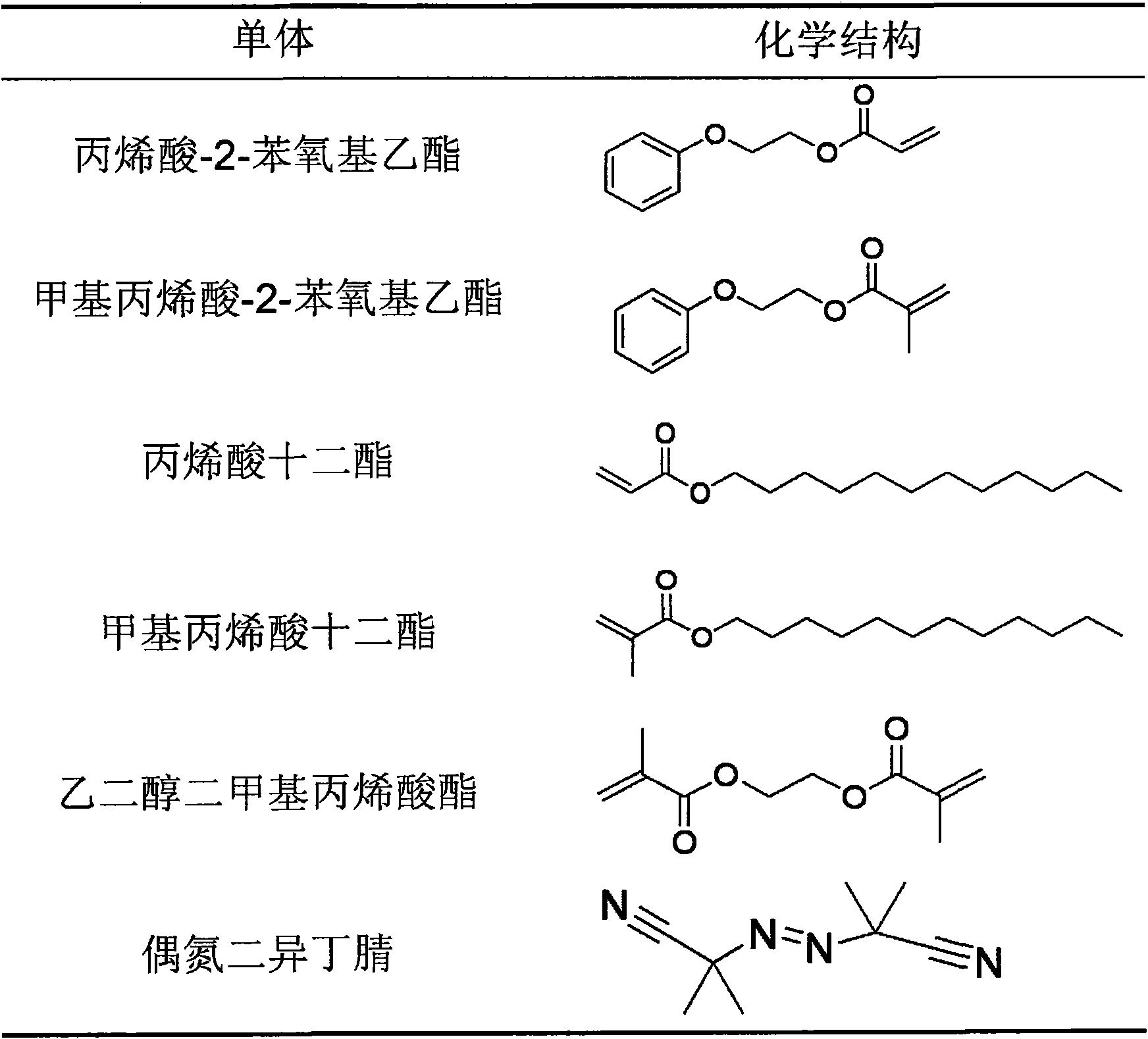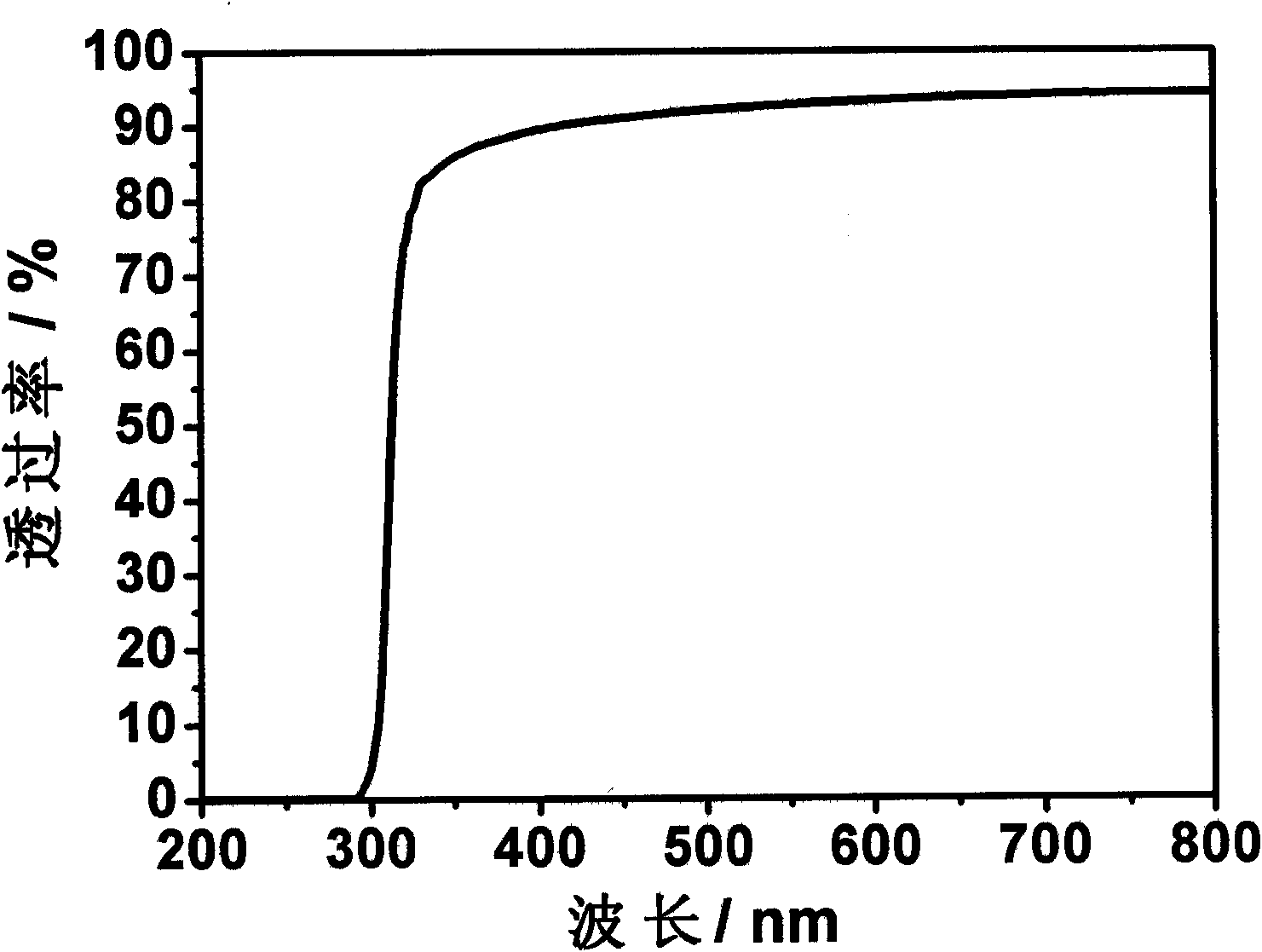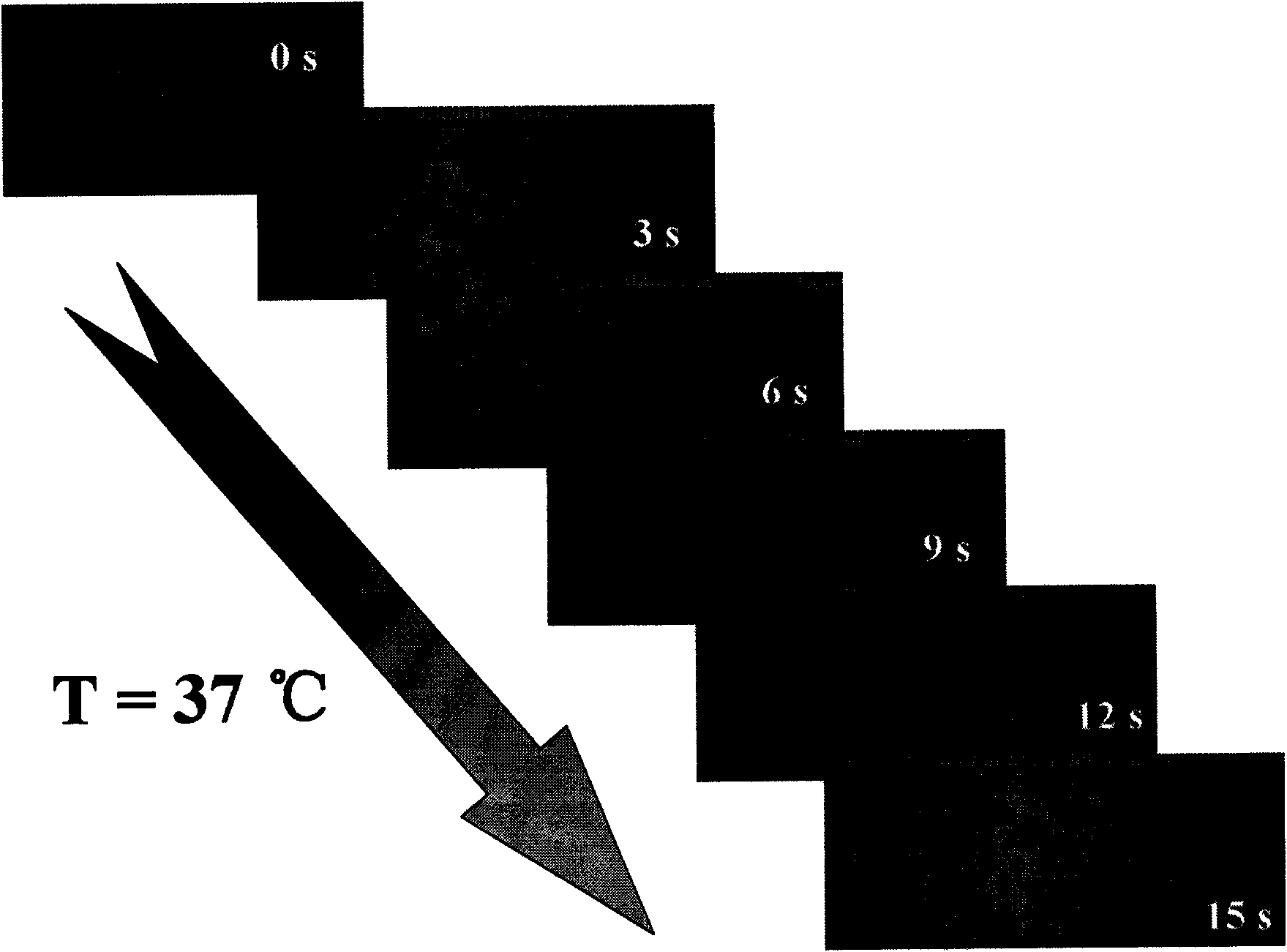Acrylic acid ester shape-memory intraocular lens material and preparation method thereof
An intraocular lens and acrylate technology, applied in the field of biomedical materials, can solve problems such as hindrance, glare, eccentric displacement, etc.
- Summary
- Abstract
- Description
- Claims
- Application Information
AI Technical Summary
Problems solved by technology
Method used
Image
Examples
example 1
[0022] The selected monomers are (a): 2-phenoxyethyl acrylate (Sartomer), (b): 2-phenoxyethyl methacrylate (Sartomer). The selected monomer mass ratio is a / b=4 / 1wt%, the content of the crosslinking agent (ethylene glycol dimethacrylate, Beijing Oriental Acrylic Chemical Technology Co., Ltd.) is 1.5% of the total mass of the monomer, and the added The content of the thermal initiator (azobisisobutyronitrile, Shanghai No.4 Chemical Reagent Company) is 0.5% of the total mass of the monomers. Mix the monomer, cross-linking agent and initiator uniformly under the protection of nitrogen, then pour into the mold, heat and polymerize in an oven at 80°C for 24 hours, perform Soxhlet extraction to remove unreacted monomers and oligomers, and make shape-memory acrylate Material. The refractive index of the material is 1.5145, and the transmittance in the visible light region is as follows: figure 2 As shown, the glass transition temperature is 18.4°C, the elastic modulus at room tempe...
example 2
[0024] The selected monomers are (a): 2-phenoxyethyl acrylate (Sartomer), (b): 2-phenoxyethyl methacrylate (Sartomer), (c): Lauryl acrylate (Tianjin Tianjiao Chemical Co., Ltd.). The selected monomer mass ratio is a / b=4 / 1wt%, the content of c is 10.0% of the total mass of a and b, and the crosslinking agent (ethylene glycol dimethacrylate, Beijing Oriental Acrylic Chemical Technology Co., Ltd.) The content of the added thermal initiator (azobisisobutyronitrile, Shanghai Fourth Chemical Reagent Company) was 0.5% of the total mass of the monomers. Mix the monomer, cross-linking agent and initiator uniformly under the protection of nitrogen, then pour into the mold, heat and polymerize in an oven at 75°C for 36 hours, perform Soxhlet extraction to remove unreacted monomers and oligomers, and make shape-memory acrylate Material. The refractive index of the material is 1.509, and the transmittance in the visible light region is as follows: Figure 4 As shown, the glass transitio...
example 3
[0026] The selected monomers are (a): 2-phenoxyethyl acrylate (Sartomer), (b): 2-phenoxyethyl methacrylate (Sartomer), (c): Lauryl methacrylate (Tianjin Tianjiao Chemical Co., Ltd.). The selected monomer mass ratio is a / b=4 / 1wt%, the content of c is 5.0% of the total mass of a and b, and the crosslinking agent (ethylene glycol dimethacrylate, Beijing Oriental Acrylic Chemical Technology Co., Ltd.) The content of the added thermal initiator (azobisisobutyronitrile, Shanghai Fourth Chemical Reagent Company) was 0.5% of the total mass of the monomers. Mix the monomer, cross-linking agent and initiator uniformly under the protection of nitrogen, then pour into the mold, heat and polymerize in an oven at 75°C for 24 hours, perform Soxhlet extraction to remove unreacted monomers and oligomers, and make shape-memory acrylate Material. The refractive index of the material is 1.514, and the transmittance in the visible light region is as follows: Figure 5 As shown, the glass transi...
PUM
| Property | Measurement | Unit |
|---|---|---|
| Glass transition temperature | aaaaa | aaaaa |
| Elastic modulus | aaaaa | aaaaa |
| Glass transition temperature | aaaaa | aaaaa |
Abstract
Description
Claims
Application Information
 Login to View More
Login to View More - R&D
- Intellectual Property
- Life Sciences
- Materials
- Tech Scout
- Unparalleled Data Quality
- Higher Quality Content
- 60% Fewer Hallucinations
Browse by: Latest US Patents, China's latest patents, Technical Efficacy Thesaurus, Application Domain, Technology Topic, Popular Technical Reports.
© 2025 PatSnap. All rights reserved.Legal|Privacy policy|Modern Slavery Act Transparency Statement|Sitemap|About US| Contact US: help@patsnap.com



